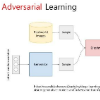Treatment effect estimation from observational data is a critical research topic across many domains. The foremost challenge in treatment effect estimation is how to capture hidden confounders. Recently, the growing availability of networked observational data offers a new opportunity to deal with the issue of hidden confounders. Unlike networked data in traditional graph learning tasks, such as node classification and link detection, the networked data under the causal inference problem has its particularity, i.e., imbalanced network structure. In this paper, we propose a Graph Infomax Adversarial Learning (GIAL) model for treatment effect estimation, which makes full use of the network structure to capture more information by recognizing the imbalance in network structure. We evaluate the performance of our GIAL model on two benchmark datasets, and the results demonstrate superiority over the state-of-the-art methods.
翻译:从观测数据中测得的处理效果估计是许多领域的一个关键研究课题。治疗效果估计中最重要的挑战是如何捕捉隐藏的混淆分子。最近,网络观测数据的日益普及为处理隐蔽的混淆分子问题提供了新的机会。与传统图表学习任务(如节点分类和连接检测)中的网络数据不同,因果推断问题下的网络数据具有其特殊性,即网络结构不平衡。在本文件中,我们提议了一个用于治疗效果估测的Great Infomex Aversarial Learning(GIAL)模型,该模型充分利用网络结构,通过确认网络结构的不平衡来捕捉更多的信息。我们评估了我们的GIal模型在两个基准数据集上的性能,其结果显示优于最新方法。



